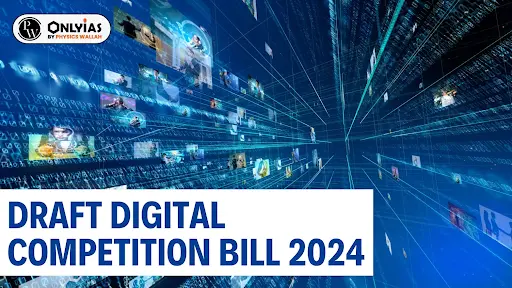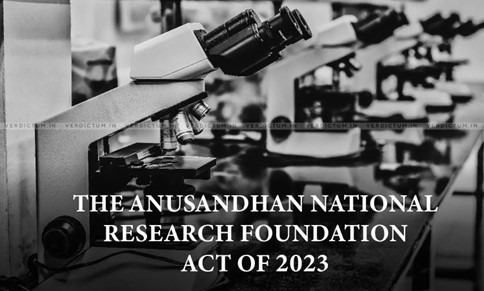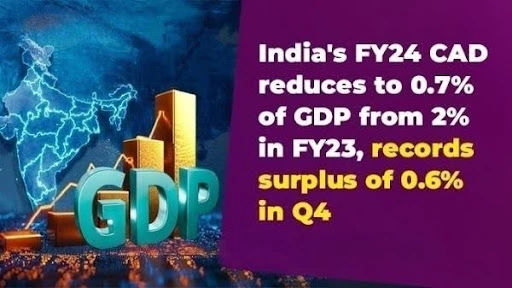Thursday, 11th July 2024
Dealing with Pakistan Without Playing Tit-for-Tat
Why in the news ?
- Recent escalation in violence in Jammu and Kashmir, resulting in the death of seven security personnel.
- Persistent issue of Pakistan-sponsored terrorism despite peace initiatives and aggressive strategies.
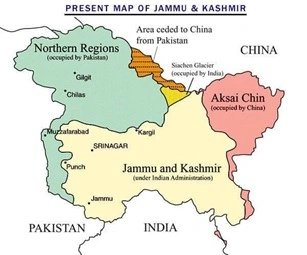
The Reality of Pakistan Sponsored Terrorism in Jammu & Kashmir:
● Historical Context
- Conflict dates back to the partition of India and Pakistan in 1947.
- Pakistan's consistent questioning of Jammu and Kashmir's accession to India.
- Proxy war waged by Pakistan through militant groups to destabilise the region and internationalise the Kashmir issue.
● Persistent Support for Terrorism
- Pakistan's ongoing support for terrorism despite internal challenges and international scrutiny.
- Training, funding, and logistical support provided to terrorist organisations like Jaish-e-Mohammed (JeM) and Lashkar-e-Taiba (LeT).
- Strategic depth and safe havens provided within Pakistan's borders.
● The Strategic Objective
- International Attention: Keeping the Kashmir issue alive as an unresolved territorial dispute.
- Weakening India: Fomenting unrest to weaken India's control and force negotiations favourable to Pakistan.
The Challenge of Reducing Tensions between India and Pakistan:
● Historical Animosities and Distrust
- Deep-seated distrust and hostility stemming from the partition of 1947.
- Multiple wars and skirmishes, notably over Jammu and Kashmir, complicating genuine dialogue and reconciliation.
● Political Constraints and Public Sentiment
- In India, public sentiment against engaging in dialogue without addressing terrorism.
- In Pakistan, political instability and polarisation complicate the situation.
- Diplomatic deadlock following India's revocation of Jammu and Kashmir's special status in 2019.
● The Role of the Military and Strategic Calculations
- Pakistani military's significant influence on policy towards India.
- Support for non-state actors as strategic assets against India's conventional military superiority.
● Economic and Trade Dynamics
- Trade potential to build mutual dependencies and foster better relations.
- Suspension of trade following the revocation of Article 370, highlighting political and military considerations over economic incentives.
● External Influences and Geopolitical Factors
- China-Pakistan economic and military partnership adding complexity.
- India's closer ties with the United States and Western countries influencing its approach towards Pakistan.
Ways Ahead to Address the Persistent Threat:
● Enhanced Security Infrastructure
- Improving intelligence-gathering, modernising equipment, and increasing security forces.
- Utilising advanced technology such as drones, surveillance systems, and cyber intelligence.
● Community Engagement
- Building trust with the local population through community engagement programs.
- Providing employment opportunities, improving infrastructure, and ensuring access to education and healthcare.
● Targeted Operations
- Conducting precise operations against terrorist operatives and networks.
- Minimising collateral damage to avoid alienating the local population.
● Bilateral Dialogue
- Sustained diplomatic efforts to engage Pakistan in dialogue through formal and informal channels.
- Exploring confidence-building measures and addressing Pakistan's security concerns and economic interests.
● Leveraging International Forums
- Utilising international forums like the United Nations and Financial Action Task Force (FATF) to exert pressure on Pakistan.
- Highlighting Pakistan's involvement in cross-border terrorism and seeking international support for India's counter-terrorism initiatives.
● Regional Cooperation
- Engaging with neighbouring countries and regional powers to isolate sources of terrorism.
- Establishing regional cooperation mechanisms for intelligence sharing and coordinated counter-terrorism operations.
● Track-II Diplomacy
- Encouraging back-channel diplomacy involving former diplomats, military officers, and civil society members.
- Building mutual understanding and laying the groundwork for formal negotiations.
Conclusion
Pakistan's involvement in terrorism in Jammu and Kashmir is a deeply entrenched policy shaped by historical, political, and strategic factors. Despite facing international pressure and internal challenges, Pakistan has not fundamentally altered its support for militant groups. This underscores the complexity of the issue and the need for a multifaceted approach, including robust security measures and sustained diplomatic efforts, to achieve long-term stability in the region.
|
UPSC Civil Services Examination, Previous Year Question (PYQ) Mains Q:1 "Increasing cross border terrorist attacks in India and growing interference in the internal affairs of several member states by Pakistan are not conducive for the future of SAARC (South Asian Association for Regional Cooperation)." Explain with suitable examples. (2016) Q:2 Terrorist activities and mutual distrust have clouded India – Pakistan relations. To what extent the use of soft power like sports and cultural exchanges could help generate goodwill between the two countries? Discuss with suitable examples. (2015) |
Source: IE
SC Upholds Maintainability Of West Bengal’s Suit Against CBI
Why in the News?
- The Supreme Court upheld the maintainability of a lawsuit filed by the State of West Bengal against the Union Government.
- The suit accuses the Centre of "constitutional overreach" and violating federal principles by deploying the Central Bureau of Investigation (CBI) in the state without obtaining prior consent from the state government.
- The Centre had argued that the Union government had no superintendence or control over the CBI.
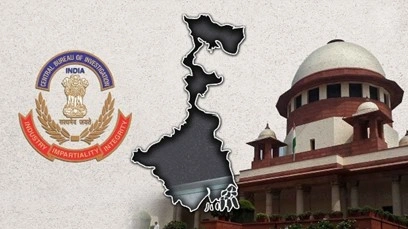
About the Central Bureau of Investigation (CBI):
- The CBI is the premier investigating agency of India operating under the jurisdiction of the Ministry of Personnel, Public Grievances and Pensions, Government of India.
- It traces its origin from the Delhi Special Police Establishment (DPSE) Act, 1946, which regulates the CBI.
- As the DPSE Act is not passed by Parliament of India, CBI is created by an executive order of the government, hence not a statutory body yet and is exempted from the purview of the Right to Information (RTI) Act.
- Originally set up to probe cases of corruption in the government departments, CBI’s jurisdiction expanded to include several economic crimes, special crimes, cases of corruption and other cases.
- Investigating powers of CBI are divided into:
- Anti-Corruption Division: It investigates cases against central government employees, public servants working under state governments (entrusted to the CBI by the state).
- The Economic Offences Division: It investigates financial crimes, bank frauds, money laundering, illegal money market operations, graft in PSUs and banks.
- The Special Crimes Division: It handles cases of conventional nature such as offences relating to internal security, espionage, narcotics and psychotropic substances, etc.
Consent Required by the CBI for Conducting Investigation in a State:
- Legal basis: Section 6 of the DPSE Act authorises the central government to direct CBI to probe a case within the jurisdiction of any state but only with the consent of the concerned state government.
- However, the SC and HCs can order CBI to investigate such a crime anywhere in the country without the consent of the state.
- Types of consent:
- General consent: When a state gives a general consent to the CBI for probing a case, the agency is not required to seek fresh permission every time it enters that state in connection with investigation or for every case.
- It is normally given by states to help the CBI in the seamless investigation of corruption cases against central government employees in their states.
- Specific consent: When a general consent is withdrawn, CBI needs to seek case-wise (specific) consent for investigation from the concerned state government.
- If specific consent is not granted, the CBI officials will not have the power of police personnel when they enter that state, preventing the CBI from conducting a thorough inquiry.
- States which have withdrawn general consent so far:
- General consent: When a state gives a general consent to the CBI for probing a case, the agency is not required to seek fresh permission every time it enters that state in connection with investigation or for every case.
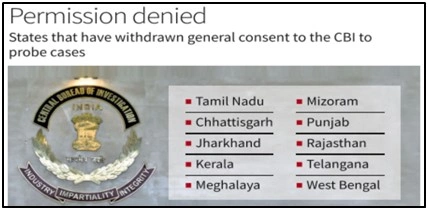
Withdrawal of General Consent and its Impact:
- The withdrawal of general consent does not stop CBI probes in all cases.
- The CBI continues to probe in old cases until specifically taken back by the state government.
- Further, it continues to investigate cases that were given to it by a court order.
- The CBI can also challenge the decision (of withdrawal of general consent) in a court showcasing its progress of investigation in the case.
- When the CBI does not have a general consent, it can approach a local court (as per a provision in the CrPC) for a search warrant and conduct investigation.
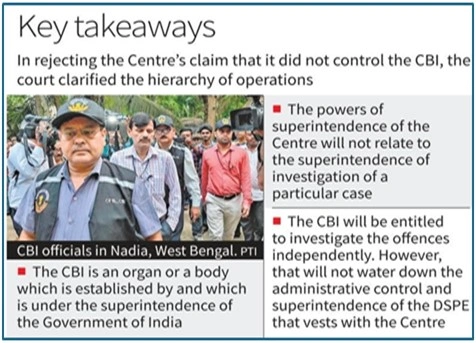
SC Holds Bengal’s Suit Maintainable:
- The Supreme Court dismissed the Centre's initial objections against a lawsuit filed by West Bengal.
- The state challenged the CBI's authority to register and investigate cases in West Bengal after the state withdrew its general consent on November 16, 2018.
Key Takeaways of the Judgement:
- The Supreme Court noted that the Union government is deeply involved with the CBI, as the agency can only investigate offences notified by the Centre under the Delhi Special Police Establishment (DSPE) Act.
- According to Section 4 of the DSPE Act, the Central Vigilance Commission oversees offences under the Prevention of Corruption Act, while the Central government supervises all other matters.
- The court reminded the Centre that the DSPE Act requires the state's prior consent for CBI investigations within its jurisdiction.
The Agency (CBI) Not Being the ‘Government of India’:
- The Centre had earlier contended that the CBI too could not be made a defendant in the suit as the agency was not the ‘Government of India’.
- Original suits filed directly in the Supreme Court under Article 131 of the Constitution exclusively deal with disputes involving the Union and the States.
- And CBI is an agency not the GoI.
- However, the SC Bench said the suit raised serious questions concerning the wider ramifications of federalism.
Source: TH
MSMEs need funds for tech upgrades, green transition
Why in the News?
- Recently, Union Minister for MSMEs, Jitan Ram Manjhi, outlined six strategic pillars identified to foster the growth of the MSME sector.

What are the 6 Pillars for the Growth of the MSME Sector?
- Formalisation and Access to Credit:
- Promoting formalisation of MSMEs to enhance their credibility and access to formal financial institutions.
- Improving access to credit through schemes like Credit Guarantee Fund Trust for Micro and Small Enterprises (CGTMSE).
- Increased Access to Market and E-commerce Adoption:
- Facilitating MSMEs’ access to domestic and international markets through initiatives like market linkages and export promotion schemes.
- Higher Productivity Through Modern Technology:
- Encouraging MSMEs to adopt modern technologies and digital tools to improve productivity and efficiency.
- Enhanced Skill Levels and Digitalisation in the Service Sector:
- Focusing on skill development and training programs to enhance the capabilities of the MSME workforce.
- Support to Khadi, Village, and Coir Industry for Globalisation:
- Promoting traditional industries like Khadi and Coir by providing marketing support and international exposure.
- Empowerment of Women and Artisans Through Enterprise Creation:
- Encouraging entrepreneurship among women and artisans through skill development and financial support.
How Can Employment be Raised?
- Promoting MSME Growth:
- Supporting MSMEs through policies that enhance access to credit, market expansion, and technological modernization.
- Encouraging entrepreneurship and startups to create new job opportunities across various sectors.
- Skill Development and Training:
- Investing in skill development programs aligned with industry needs to enhance employability.
- Collaborating with educational institutions and industry partners to bridge skill gaps and promote vocational training.
- Infrastructure Development:
- Investing in infrastructure projects that create jobs directly and indirectly, such as construction, transportation, and utilities.
- Developing industrial clusters and economic zones to attract investments and generate employment in manufacturing and allied sectors.
- Supporting Employment-intensive Sectors:
- Promoting sectors with high employment potential, such as tourism, agriculture, healthcare, and renewable energy.
- Encouraging initiatives that prioritise job creation and inclusive growth, particularly in rural and semi-urban areas.
Indian Government Steps Taken for MSMEs:
- Prime Minister Employment Generation Programme (PMEGP):
- This scheme aims to create employment opportunities through the setting up of new micro-enterprises and to provide subsidies and credit support to MSMEs.
- Credit Guarantee Scheme for Micro & Small Enterprises (CGTMSE):
- Provides collateral-free loans of up to ₹1 crore to individual Micro and Small Enterprises (MSEs).
- Financial Support to MSMEs in ZED Certification Scheme:
- Provides up to 80% subsidy to MSMEs to inculcate Zero Defect and Zero Effect (ZED) practices in manufacturing.
- A Scheme for Promoting Innovation, Rural Industry & Entrepreneurship (ASPIRE):
- Facilitates innovative business solutions, promotes entrepreneurship, and creates new jobs at the grassroots level.
Way to Green Transition and R&D (Way Forward)
- Financial Incentives and Soft Funds:
- Provide financial incentives, subsidies, and soft loans to MSMEs for adopting green technologies and practices.
- Support research and development (R&D) initiatives focused on sustainable solutions through grants and tax incentives.
- Policy Support and Regulatory Framework:
- Develop supportive policies and regulatory frameworks that encourage MSMEs to integrate environmental sustainability into their operations.
- Capacity Building and Technical Assistance:
- Offer capacity-building programs and technical assistance to MSMEs to enhance their knowledge and capabilities in green technologies.
- Promotion of Green Products and Market Access:
- Promote green products and services through marketing campaigns and certification programs to increase consumer awareness and demand.
- Facilitate market access for MSMEs producing environmentally friendly products by creating platforms for showcasing and selling green innovations.
|
UPSC Civil Services Examination, Previous Year Question Mains Q:1 Economic growth in the recent past has been led by an increase in labour productivity.” Explain this statement. Suggest the growth pattern that will lead to the creation of more jobs without compromising labour productivity. (2022) |
Source: TH
India-Austria Bilateral Relationship
Why in the news ?
- Prime Minister Narendra Modi met Austria’s President Alexander Van der Bellen in Vienna to further expand bilateral cooperation in several sectors, including environment and combating climate change.
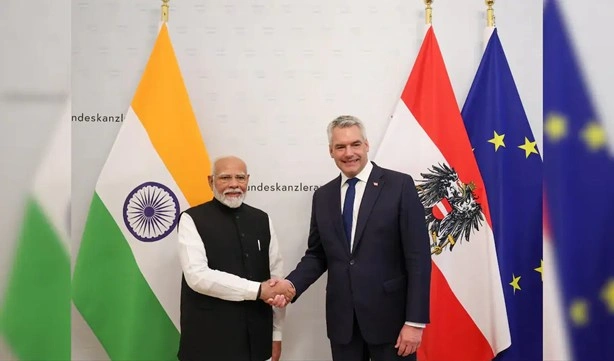
India-Austria Bilateral Relationship:
● Political Relations:
- Diplomatic Ties: Established in 1949, strengthened through high-level visits and bilateral agreements.
- Cooperation in Multilateral Platforms: Collaborate on global issues like climate change and sustainable development at the United Nations.
● Economic and Trade Relations:
- Trade Volume: Balanced bilateral trade with steady growth; significant sectors include electronics, textiles, machinery, and steel.
- Investment: Austrian investments in engineering and renewable energy sectors in India; growing interest from Indian companies in IT and manufacturing in Austria.
● Cultural and Educational Exchanges:
- Cultural Programs: Promote mutual understanding through events like the Festival of India and Austrian cultural showcases.
- Educational Cooperation: Increasing academic collaborations and scholarships; significant Indian student presence in Austrian universities.
News Summary:
- Visit Details: PM Modi’s historic visit to Austria coinciding with the 75th anniversary of diplomatic relations.
- Key Outcomes:
- High-Level Meetings: Discussions with the Austrian Chancellor and President focused on bilateral, regional, and global cooperation.
- Shared Values: Emphasis on democracy, freedom, and a rules-based international order.
- Economic Focus: Commitment to sustainable growth, green technologies, and digital innovation.
- Political and Security Cooperation: Mutual support on Indo-Pacific security, counterterrorism, and Ukraine conflict resolution.
- Multilateral Engagement: Support for UN reforms and each other’s candidacies.
- Cultural and People-to-People Ties: Promotion of cultural exchanges, tourism, and recognition of yoga and Ayurveda.
- Climate and Sustainability: Joint efforts towards climate neutrality and green hydrogen technologies.
- Future Collaboration: Invitation for Austrian Chancellor to visit India to further deepen bilateral ties.
Source: TH
Maternal Healthcare for the Tribal Population
Why in the news?
- Recently, a study focused on Gujarat’s tribal population examined how geographical location, as well as factors like time and distance, influence access to maternal healthcare facilities within the community.
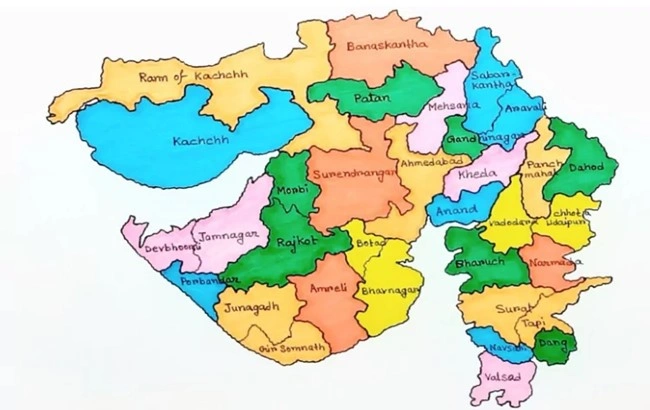
Marginalisation of Tribals in Accessing Maternal Healthcare:
- Remote Locations: Tribal communities often reside in remote, hard-to-reach areas with inadequate infrastructure, making timely access to healthcare facilities difficult for pregnant women.
- Transportation Constraints: Social norms and limited resources hinder women, particularly in rural areas, from accessing healthcare facilities, as personal vehicles are rare and public transportation is limited.
- Limited Healthcare Professionals: Scarcity of trained healthcare professionals willing to serve in remote and tribal areas severely restricts access to quality maternal healthcare services.
- Awareness Gaps: Geographical isolation contributes to low awareness about the importance of maternal healthcare, resulting in underutilization of available services.
- Discrimination: Within the healthcare system, tribal populations often encounter discrimination and stigma, discouraging them from seeking medical care.
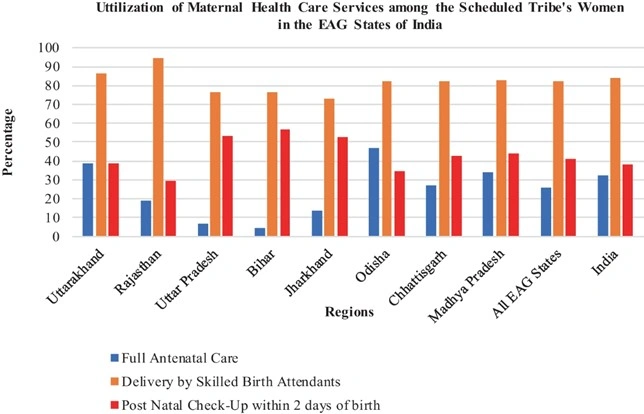
Government Initiatives:
- ASHA Programme: Recruits Accredited Social Health Activists (ASHAs) at the habitation level in hilly, tribal, and difficult areas.
- National Ambulance Services: Implemented under the National Health Mission (NHM) to provide free transportation of sick patients, benefiting tribal communities.
- High Priority Districts (HPDs): Tribal-majority districts with below-average health indices receive enhanced per capita resources under NHM to improve healthcare access.
- Pradhan Mantri Surakshit Matritva Abhiyan (PMSMA): Offers free antenatal care to pregnant women on the 9th of every month.
- Sustainable Development Goals (SDGs): Goals 3.1 and 3.2 aim to enhance maternal and child health outcomes and ensure equitable access to quality healthcare services.
Way Ahead:
- Mobile Health Clinics: Deploying mobile health units to reach remote tribal areas and provide essential maternal healthcare services.
- Community Health Workers: Training local health workers who understand tribal languages and cultures to deliver maternal healthcare services and education.
- Infrastructure Development: Improving transportation and healthcare infrastructure in remote regions to facilitate easier access to healthcare facilities.
- Policy Advocacy: Advocating for policies tailored to the healthcare needs of tribal populations and ensuring their effective implementation.
Source: TH
RBI Data Shows Significant Job Growth in FY2024
Why in the News ?
- According to the Reserve Bank of India (RBI), employment growth in India saw a substantial increase of nearly 6 per cent in the fiscal year 2023-24.
- It adds 4.67 crore new jobs, bringing the total workforce to 64.33 crore in FY2024 (up from 59.67 crore).
- The RBI’s Measuring Productivity at the Industry Level-The India KLEMS database, provides comprehensive insights into the country’s employment landscape.
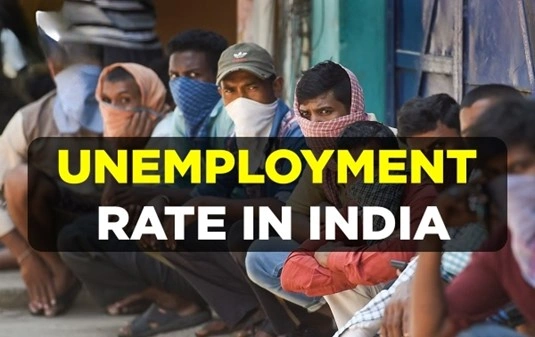
Citigroup Report and Government Response:
- A recent report by Citigroup expressed doubts about India’s ability to generate enough jobs, even with a 7% GDP growth rate over the next ten years.
- The Labour Ministry criticised the Citigroup report for failing to account for comprehensive employment data from official sources like the Periodic Labour Force Survey (PLFS) and the RBI’s KLEMS data.
- The Ministry highlighted that the RBI’s KLEMS data indicates the creation of over 8 crore employment opportunities between 2017-18 and 2021-22, averaging more than 2 crore jobs per year.
Highlights of Citigroup Report:
|
Employment Trends – Latest PLFS Data:
- The latest PLFS data (May 2024) indicates a slight decrease in urban unemployment rates (from 6.8% to 6.7%) and a decline in female unemployment rates (from 9.2% to 8.5%).
- Positive trends include an increase in the urban labour force participation rate (from 48.5% to 50.2%) and worker population ratio (from 45.2% to 46.9%).
- Notably, the female worker population ratio in urban areas rose significantly (from 20.6% to 23.4%).
India KLEMS Database:
- The India KLEMS Database is a comprehensive economic research project supported by the RBI that aims to analyse productivity performance in the Indian economy at a disaggregated industry level.
- It covers 27 industries comprising the entire Indian economy, with data from 1980-81 onwards.
- The industries are aggregated into six broad sectors: Agriculture, Mining and Quarrying, Manufacturing, Electricity/Gas/Water supply, Construction, and Services.
- It includes measures of economic growth, employment creation, capital formation, and productivity.
- The database incorporates various categories of inputs, including Capital (K), Labour (L), Energy (E), Material (M), and Services (S) – hence the name KLEMS.
- The database is constructed using data from National Accounts Statistics (NAS), Annual Survey of Industries (ASI), NSSO rounds, and Input-Output Tables.
Source: (IE)
Mitochondrial donation therapy
Why in the News ?
- Mitochondrial donation is an IVF-based technique that replaces the faulty mitochondrial DNA in the patient’s eggs with healthy mitochondrial DNA from a donor egg.
- Mitochondrial donation techniques allow a reproductive clinic to create an embryo which contains the:
- nuclear DNA from a man and a woman (the prospective mother)
- mitochondria in an egg donated by another woman (the mitochondrial donor).
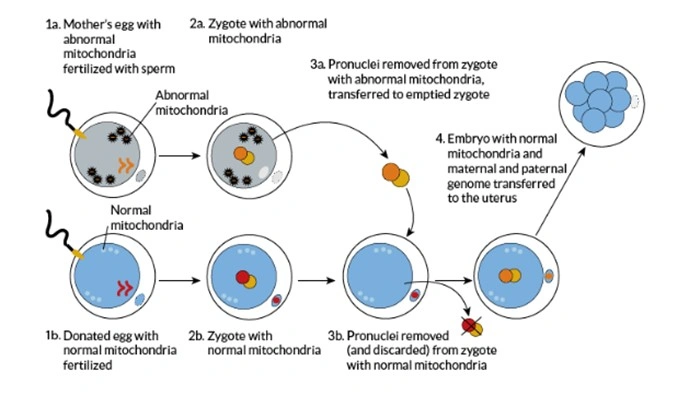
- It minimises the risk of a prospective mother transmitting mitochondrial disease to her child.
- It cannot cure people with existing mitochondrial disease or prevent mitochondrial disease caused by a mutation in nuclear DNA.
Mitochondria
|
Mitochondrial disease:
- Mitochondrial disease (or Mito) is a group of diseases that affect mitochondria’s capacity to produce the energy organs need to function properly.
- There are two kinds of mitochondrial disease:
- One is brought by faulty genes in the nuclear DNA, which makes us who we are and is passed down from one parent to another.
- The other is brought on by faulty genes in the mitochondrial DNA. Mito caused by faulty mitochondrial DNA is passed down through the mother.
- Faulty mitochondria can cause inherited conditions such as fatal heart problems, liver failure, brain disorders, blindness and muscular dystrophy. It is a progressive condition that gets worse over time.
- Currently, there is no effective treatment for mitochondrial diseases, though the symptoms are treated to improve the patient’s quality of life.
Source: (BS)
Classical Language Status
Why in the news?
- The Central Government recently decided to revise the criteria for granting classical language status.
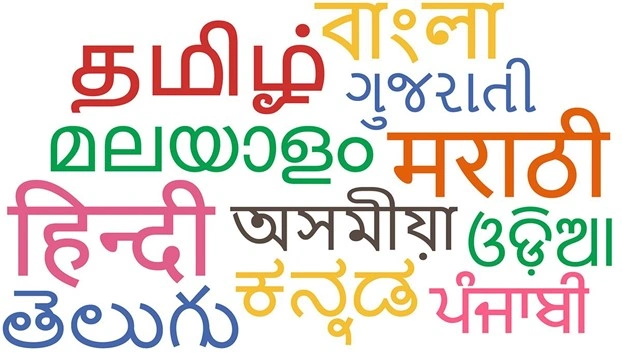
About Classical Language Status:
- Criteria for Classical Language Status:
- High antiquity in its early texts or recorded history spanning 1,500-2,000 years.
- A substantial body of ancient literature or texts recognized as a valuable heritage by successive generations.
- The literary tradition should be original to the language community and not borrowed.
- The classical language and its literature should be distinct from its modern forms, with potential discontinuity between the classical language and its later developments or derivatives.
- Benefits of Classical Language Status:
- Recognition by the Education Ministry with benefits including international awards for scholars, establishment of a centre of excellence, and creation of Professional Chairs in Central universities.
Classical Languages in India:
- Languages Currently Recognized as Classical:
- Tamil: Recognized in 2004.
- Sanskrit: Recognized in 2005.
- Telugu: Recognized in 2008.
- Kannada: Recognized in 2008.
- Malayalam: Recognized in 2013.
- Odia: Recognized in 2014.
- These languages have been honoured for their rich literary traditions and historical significance, meeting the stringent criteria set by the government for classical language status.
Source: TH
Borehole Geophysics Research Laboratory (BGRL)
Why in the news ?
- The Borehole Geophysics Research Laboratory (BGRL) in Karad, Maharashtra, is a specialised institute under the Ministry of Earth Sciences tasked with executing India’s deep-drilling program.
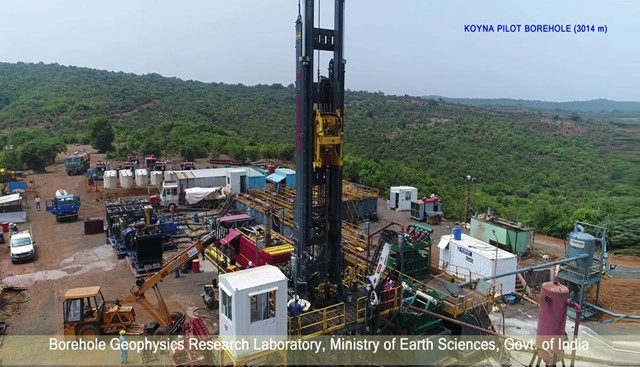
About Borehole Geophysics Research Laboratory (BGRL):
- Location and Mandate:
- BGRL is located in Karad, Maharashtra.
- It operates under the Ministry of Earth Sciences.
- BGRL’s primary mission is to conduct India’s scientific deep-drilling program.
- Objectives:
- The main goal is to drill into the earth’s crust to a depth of 6 km.
- Focus areas include studying reservoir-triggered earthquakes in the Koyna-Warna region of Maharashtra.
- This region has experienced seismic activity since the impoundment of the Shivaji Sagar Lake (Koyna Dam) in 1962.
- Current Progress:
- BGRL has completed a 3-km-deep pilot borehole in the Koyna region.
- The Ministry of Earth Sciences aims to reach a depth of 6 km in subsequent phases.
- Drilling Strategy:
- BGRL employs a unique drilling strategy combining mud rotary drilling and air hammering techniques.
- Benefits of Deep-Drilling:
- Scientifically drilled boreholes facilitate in situ experiments and observations.
- They monitor fault lines and seismic behaviour, providing critical data on the earth’s crust composition, structure, and processes.
- Findings help validate surface study models and contribute to understanding geohazards and geo-resources.
- Advances in seismology and technological innovations in drilling, observation, data analysis, and sensor development are potential outcomes.
Source: TH
Shield-tail snake
Why in the news ?
- The recently discovered species of shield-tail snake, named Uropeltis caudomaculata, has garnered attention for its unique characteristics
- Distribution in the Meghamalai-Munnar landscape of the Western Ghats.

About Shield-tail Snake (Uropeltis caudomaculata):
- Distinctive Features:
- Named for the yellow spots on each side of the base of its tail.
- Distinguished by an increased number of ventral scales.
- Exclusive distribution along the eastern escarpment of the Western Ghats, from Meghamalai to approximately 15 km east of Munnar.
- Distribution:
- Found in limited areas:
- Meghamalai Tiger Reserve in Tamil Nadu.
- Periyar Tiger Reserve and Yellapetty, Munnar in Kerala.
- Restricted to these specific localities within the Western Ghats.
- Found in limited areas:
- General Characteristics of Shield-tail Snakes:
- Venom: Non-venomous.
- Family: Uropeltidae, a group of primitive snakes endemic to peninsular India and Sri Lanka.
- Physical Features: Characterised by a large keratinous shield at the tip of the tail, giving them their name "shield-tailed snakes."
- Habitat:
- Typically inhabit hilly forests.
- Occupy tunnels in leaf litter, humus, rocks, and logs.
- Burrowing species found up to 1 foot below the soil surface.
- Geographical Range:
- Native to the Western Ghats and certain parts of Peninsular India.
- Adapted to the specific ecological niches within their habitat.
Source: TH
The Case for a Caste Census
Context:
- The Census Act, 1948 should be revised to mandate caste enumeration as a regular part of the Census, with specific questions in the questionnaire, removing the Union executive's discretion.
- Peter Drucker’s quote, “Only what gets measured gets managed,” underscores the necessity of collecting data on group identities to address discrimination effectively.
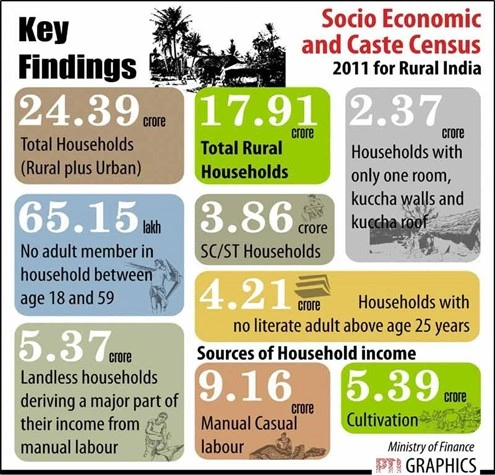
Census in India:
● About:
- Population Census provides basic statistics on the state of human resources, demography, culture, and economic structure at local, regional, and national levels.
- Beginning in 1872, when the first census was conducted non-synchronously, the census enumeration exercise in India is carried out every 10 years.
- The first synchronous census was taken under British rule in 1881, by W.C. Plowden, Census Commissioner of India.
- The responsibility of conducting the decadal census rests with the Office of the Registrar General and Census Commissioner of India, Ministry of Home Affairs.
● Legal/Constitutional Basis of Census in India:
- Population census is listed in the Union List (entry 69) of the Seventh Schedule in the Indian Constitution. Census is conducted under the provisions of the Census Act, 1948.
● Caste Census:
- Caste was enumerated in British India Censuses (1881-1931). Post-Independence, the 1951 Census excluded caste enumeration except for SCs and STs, who continue to be counted.
- In 1961, the Government of India recommended states conduct their own surveys for state-specific OBC lists, as there were no central reservations for OBCs at that time.
- Though Census is a Union subject, the Collection of Statistics Act, 2008 allows states and local bodies to gather necessary data, as seen in Karnataka (2015) and Bihar (2023).
Need for Caste Census:
● Social Imperative
- Caste remains a key social structure in India, evidenced by low inter-caste marriages, prevalent caste surnames and marks, residential segregation, etc.
- Choices of candidates for elections and ministers for Cabinets continue to be dictated by caste considerations.
● Legal Imperative
- Constitutionally-mandated social justice policies, including reservations in various sectors, require detailed caste data.
- Although the Constitution mentions class instead of caste, the Supreme Court has ruled caste as a significant criterion for defining backward classes and supporting reservation policies.
● Administrative Imperative
- Detailed caste data helps correct wrongful caste inclusions/exclusions.
- Prevents dominant castes within reserved categories from monopolising benefits.
- Aids in sub-categorizing castes.
- Determines the creamy layer income/wealth criterion.
● Moral Imperative
- Lack of caste data has allowed elites among upper castes and dominant OBCs to disproportionately control national assets, income, and power.
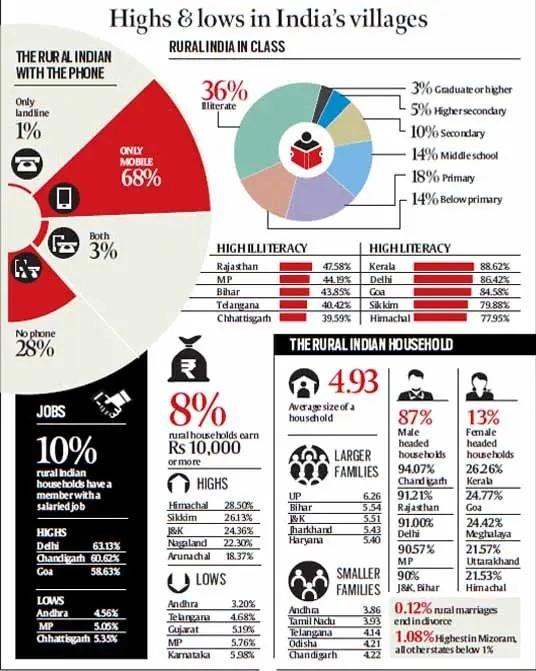
Argument against Caste Census:
● Socially Divisive
- Critics argue it could deepen social divisions.
- However, India has had deep social divides for nearly 3,000 years. Census counts of SCs and STs since 1951 haven't led to conflicts among these groups.
- Additionally, the Census already includes potentially divisive categories like religion, language, and region.
- Casteism will not wither away by not counting caste in the Census, any more than communalism and regionalism will disappear by not enumerating religion, language, and region.
● Administrative Nightmare:
- Many opponents claim it is an administrative nightmare.
- Despite concerns, caste enumeration is feasible. Unlike the fuzzy concept of race, caste identity is clear.
- The Government of India has successfully enumerated 1,234 SC castes and 698 ST tribes.
- Counting the 4,000-odd other castes, mostly state-specific, should not be overly problematic.
● Fueling Demands for Increased Reservations:
- Opponents say it would fuel demands for increased reservations.
- Rather than fueling demands, detailed caste data could help curb arbitrary reservation demands.
- It would allow for objective policymaking and informed debates on reservation claims from groups like Marathas, Patidars, and Jats.
- Governments often prefer vague data, allowing them to implement reservations arbitrarily for electoral gains.
The Case for OBC Inclusion in Census:
- Reservations for OBCs in Education and Public Employment:
- The Constitution permits reservations for OBCs in education and public employment (Articles 15(4) and 16(4)), similar to SCs and STs.
- Following the Mandal Commission, OBCs also have reservations in the Central government.
- The Supreme Court's Indra Sawhney case (1992) ruling requires periodic revision of the OBC list, which is based on the 1931 Census.
- No Reservation in Electoral Constituencies for MPs and MLAs:
- While OBCs lack reservations in MP and MLA constituencies, the 73rd and 74th amendments (1993) mandate reservations in panchayats .
- Municipalities for SCs, STs, and OBCs (Articles 243D(6) and 243T(6)).
- Accurate caste-wise data of OBCs is needed for this, which the Government of India (GOI) should have collected in the 2001 Census but did not.
- Judiciary Demands Caste-wise Data to Uphold Reservations:
- States like Uttar Pradesh, Madhya Pradesh, Gujarat, Maharashtra, Karnataka, Odisha, and Jharkhand have faced judicial stays on OBC reservations in local elections due to the absence of caste-wise data.
- While the judiciary demands this data, the executive has avoided collecting it.
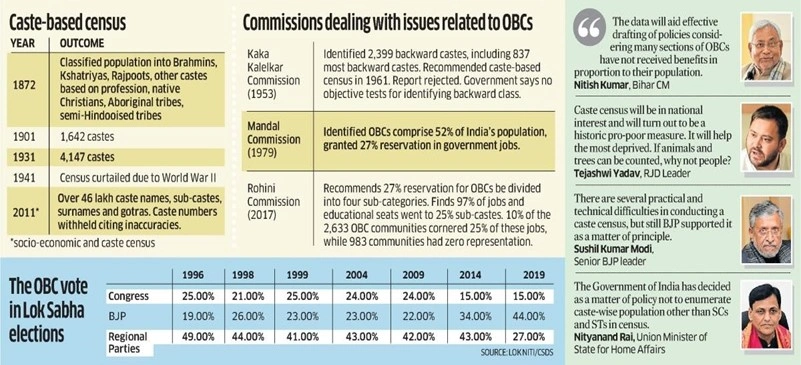
Attempt at Caste Census Failed:
- In 2010, after significant lobbying, the Parliament unanimously resolved to include caste enumeration in the 2011 Census.
- The last caste enumeration in the 1931 Census identified 4,147 castes.
- The Socio Economic and Caste Census (SECC)-2011, which was not conducted under the Census Act, 1948, failed due to poor design and execution, resulting in an implausible figure of 46 lakh castes.
- The SECC-2011 failed because it was not conducted under the Census Act, 1948, as the Act was not amended to include caste as a parameter.
- It was conducted through the Union Ministries of Rural Development and Urban Development, which lacked experience in conducting sociological/anthropological surveys.
- The questionnaire was poorly designed and included open-ended questions about caste.
- Enumerators could not distinguish between genuine castes, alternative caste names, larger caste groups, sub-castes, surnames, clan names, gotras, etc.
Way Forward:
- Amend the Census Act, 1948
- The Census Act, 1948, should be amended to mandate caste enumeration, removing the discretion of the Union executive.
- Include Caste Data in Regular Census
- Caste data should be collected during the regular Census by the Census Commissioner, with relevant questions added to the questionnaire.
- Involve Experts in Drafting Caste Lists
- Sociological and anthropological experts should draft state-specific caste lists, publish them online for public input, and finalise them before providing them to enumerators.
- Improve Questionnaire Design
- The questionnaire should include questions about sub-caste, caste, larger caste group, and caste surname.
- Utilise Technology for Data Collection
- Using internet-enabled devices with preloaded details would simplify and ensure accurate data collection.
|
UPSC Civil Services Examination, Previous Year Question Prelims Q:1 Consider the following statements: (2009)
Which of the statements given above is/are correct? (a) 1 only (b) 2 only (c) Both 1 and 2 (d) Neither 1 nor 2 Ans: (d)
Mains: Q:1 Caste system is assuming new identities and associational forms. Hence, the caste system cannot be eradicated in India.” Comment. (2018) |
Source: TH
Share the article
Edukemy’s Current Affairs Quiz is published with multiple choice questions for UPSC exams
MCQ
Get Latest Updates on Offers, Event dates, and free Mentorship sessions.

Get in touch with our Expert Academic Counsellors 👋
FAQs
UPSC Daily Current Affairs focuses on learning current events on a daily basis. An aspirant needs to study regular and updated information about current events, news, and relevant topics that are important for UPSC aspirants. It covers national and international affairs, government policies, socio-economic issues, science and technology advancements, and more.
UPSC Daily Current Affairs provides aspirants with a concise and comprehensive overview of the latest happenings and developments across various fields. It helps aspirants stay updated with current affairs and provides them with valuable insights and analysis, which are essential for answering questions in the UPSC examinations. It enhances their knowledge, analytical skills, and ability to connect current affairs with the UPSC syllabus.
UPSC Daily Current Affairs covers a wide range of topics, including politics, economics, science and technology, environment, social issues, governance, international relations, and more. It offers news summaries, in-depth analyses, editorials, opinion pieces, and relevant study materials. It also provides practice questions and quizzes to help aspirants test their understanding of current affairs.
Edukemy's UPSC Daily Current Affairs can be accessed through:
- UPSC Daily Current Affairs can be accessed through Current Affairs tab at the top of the Main Page of Edukemy.
- Edukemy Mobile app: The Daily Current Affairs can also be access through Edukemy Mobile App.
- Social media: Follow Edukemy’s official social media accounts or pages that provide UPSC Daily Current Affairs updates, including Facebook, Twitter, or Telegram channels.

